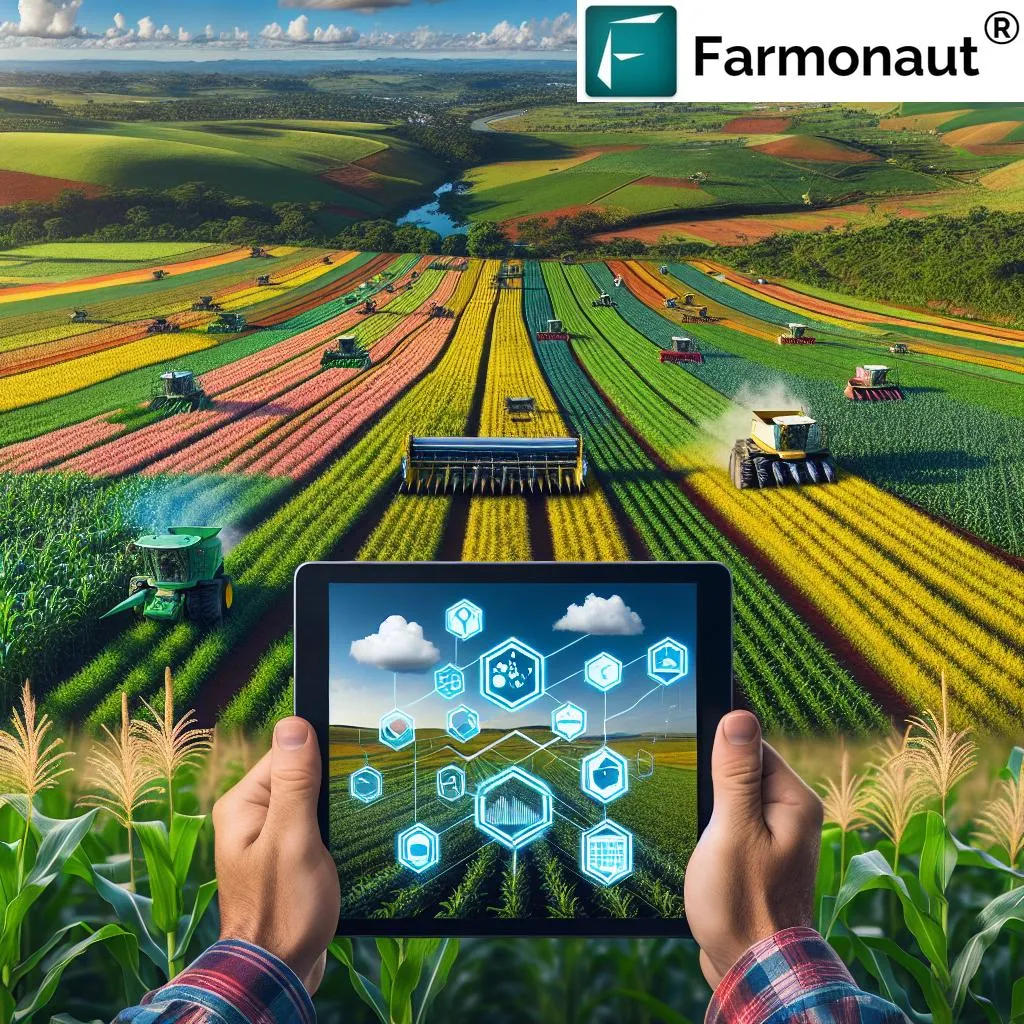In an era where agricultural sustainability hinges on open, traceable, and reliable data, a Brazilian researcher has proposed a novel solution to one of the sector’s most persistent challenges: how to share agricultural data securely without losing control or value. Ivan Bergier of Embrapa Digital Agriculture has developed a framework called AgriTrust, designed to combine data governance, semantic technology, and federated digital infrastructure to promote trusted data exchange across complex agri-food systems.
The paper “AgriTrust: A Federated Semantic Governance Framework for Trusted Agricultural Data Sharing,” outlines a model to balance data openness with sovereignty and accountability. It proposes a federated system where farmers, cooperatives, platforms, and regulators can share verifiable data while ensuring ownership, privacy, and compliance with regulations like the European Union’s Deforestation Regulation (EUDR).
The study identifies what Bergier calls the “AgData Paradox,” a situation where the agricultural sector recognizes the value of shared data for efficiency and sustainability but remains reluctant to share it because of deep-seated concerns over misuse, loss of ownership, and unequal benefits. Existing solutions such as centralized databases or isolated blockchain pilots have failed to resolve this paradox because they either compromise sovereignty or create new digital silos.
AgriTrust tackles the issue by introducing a federated semantic governance model that merges legal, technical, and ethical dimensions of data sharing. Instead of relying on a single authority or blockchain network, the framework enables multiple independent actors, such as farms, certification bodies, processors, and platforms, to participate in a shared data ecosystem under common governance rules. Each participant retains control over their data but agrees to standardized protocols for interoperability, integrity, and traceability.
AgriTrust features Core Ontology, an OWL-based semantic model that defines how digital assets, credentials, contracts, and observations are described and linked across systems. By aligning with established vocabularies such as PROV-O, SOSA/SSN, GeoSPARQL, AGROVOC, and GS1, this ontology allows machines to interpret and verify agricultural data consistently, regardless of platform or region. This semantic backbone is coupled with data contracts, machine-readable agreements that specify permissions, obligations, and compensation related to data use. The framework thus ensures that sharing information, such as sustainability certificates or traceability records, automatically triggers legal and economic terms, preserving fairness across the supply chain.
The architecture of AgriTrust is deliberately federated, avoiding the pitfalls of centralized control. Bergier divides the system into two synergistic layers, a governance layer and a semantic digital layer, that together create a self-regulating, multi-provider ecosystem. The governance layer sets out rules of engagement built on four guiding principles: Data Sovereignty – Producers and organizations maintain control over their digital assets. Transparent Contracts – Each data exchange is governed by verifiable, machine-readable agreements. Equitable Value Sharing – Benefits of data sharing are distributed fairly among stakeholders. Regulatory Compliance – All data flows must align with environmental and trade regulations such as the EUDR.
The semantic layer operationalizes these rules through the ontology, metadata standards, and Tokenization-as-a-Service (TaaS). Tokens represent data assets, certificates, or observations, allowing verification through cryptographic signatures without exposing sensitive details. Data itself remains off-chain, while integrity proofs and access controls can be distributed across different blockchains, an approach that preserves privacy while ensuring transparency. This design makes AgriTrust blockchain-agnostic. Instead of binding participants to a single ledger, it supports multiple distributed ledgers and governance authorities that interoperate via shared semantics. Each platform in the federation synchronizes with a Core Ontology Registry, ensuring consistent definitions and allowing federated queries across domains.
In practice, this means a cooperative in Brazil could verify a sustainability certificate issued by a European platform or a carbon measurement token from another network without having to duplicate or transfer data.
To validate the concept, Bergier applies AgriTrust to three Brazilian supply chains, coffee, soy, and beef, each representing a different governance and traceability challenge. In the coffee sector, AgriTrust was tested to ensure compliance with the EU Deforestation Regulation. The ontology was customized with coffee-specific classes to link geospatial boundaries, production data, and satellite observations. Through federated querying, the system verified deforestation-free claims without revealing commercially sensitive farm information.
For the soy industry, where physical segregation is not always feasible, AgriTrust implemented a mass-balance accounting model that allows commodities from compliant and non-compliant sources to be traced through tokenized balance sheets. Each transaction preserved due diligence documentation while maintaining confidentiality at the producer level. In the beef supply chain, AgriTrust handled batch-level and animal-level tracking, enabling the verification of movement, certification, and origin data across different stakeholders, from ranchers to slaughterhouses and exporters. By integrating identity credentials and process metadata

